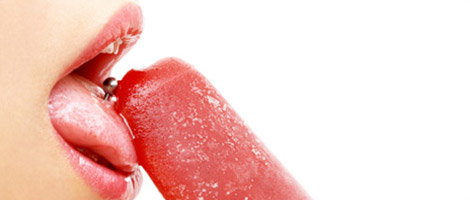
Tongue Piercings
This is a form of body modification used by some to express individuality and creativity. In recent years it has gained immense popularity and acceptance in Western culture, so much so that people have upped the ante and started getting more radical forms of tongue piercing. Claims of better oral sex, the fact that the piercing is hidden just enough, and a relatively quick healing process makes it a desirable form of physical adornment for many. These benefits don’t come without potential risks to your health; however, you can mitigate these by taking the steps to educate yourself. Read on to find out more about the in’s and out’s of oral modification.
Piercing Stats and Facts
Straight barbells are normally used to pierce the tongue; they range in gauge from 10 to 14. Barbells look like a straight bar with two larger rounded ends. Sizing the barbell appropriately is very important given the amount of movement exercised by the tongue; an uncomfortable piece of jewellery is the last thing you need while you’re waiting for your piercing to heal. Smartie beads as well as hollow barbells are used in order to keep the weight of the jewellery low and reduce irritation. Keeping the weight balanced proportionately is also important to lessen the risk of migration - that is, the movement of a piece of jewellery from its original location. However, migration may be a signal of the body trying to reject, or push out, the foreign object.
Part of the fun of having a piercing is the freedom to express yourself with the jewellery. The industry has developed a variety of decorative materials to satisfy creative demands, particularly because of the variety of objects that can be placed on each ends of the barbell. French ticklers are an example of one such attachment that you can easily wear because these silicone sleeves can slide right over top of a barbell bead. Jewellery such as ‘No-C-Um’s’ or acrylic tongue retainers match the colour of your tongue in case your employer prohibits oral piercing. However, these ‘no-see’ materials are often made of plastic, making them prone to cracking and discoloration, so be prepared to have replacements on hand.
The most common materials used for oral piercing are surgical stainless steel, titanium, acrylic, Blackline, Teflon, gold and wood. Keep in mind, however, that the initial piercing will need to be pierced with titanium or surgical stainless steel as the chemical characteristics make them suitable for healing wounds.
Social Acceptance
Having a tongue piercing is not limited to a particular age group. The number of people with some type of body piercing has grown and it has therefore become significantly more ‘socially acceptable’. What’s more, piercing the tongue is not gender-specific, contributing to its popularity. Tongue piercings are appealing because of their seductiveness; the sexual suggestiveness speaks for itself. For others it’s their fashionability … some may even go so far as to say that they’ve become a cultural norm for Western society. One common misconception is that if you’ve got a tongue ring, then you’re sexually ‘easy’, but this fallacy can be easily corrected by observing its now widespread existence in mainstream society.
Different Forms of Tongue Piercing
The phrase ‘tongue ring’ is a misnomer because the tongue isn’t actually pierced with a ring, except in rarer instances, which you’ll read about below! The exact location of your piercing will largely depend on the shape of your tongue. There are a couple of issues that could eliminate your option for an oral piercing, such as overly large veins beneath the tongue, or a sizeable tongue web (the flap of skin called the ‘frenulum’ located beneath the tongue). However, if you have your heart set on getting a tongue piercing, it may be possible to get a tongue frenectomy, a procedure that cuts away part of the tissue under the tongue in order to accommodate the piercing. If this affects you, consult an oral surgeon to see if you’re a suitable candidate for this procedure.
If you’re considering a piercing to enhance your oral sex skills, the placement will vary according to your sexual inclination. It is thought that piercings closer to the tip of the tongue are useful to pleasure a female whereas a piercing deeper in the mouth will aid oral sex on a male. If your anatomy supports it, multiple piercing could also be an option. Possible alignments are: vertical (resembling a ladder going back along the tongue; cross-ways; or a combination of the two. Here’s a comprehensive list to get you on your way:
- Vertical - the most common location to be pierced is centered somewhere through the front two-thirds of the tongue. If the structure of your tongue allows, an off center piercing is also an option.
- Horizontal - in more radical cases, the tongue can be pierced horizontally: the procedure is the same but it is much more painful and can take longer to heal. The procedure is the same but the jewellery is made of a flexible material like tygon and the beads, usually made of nylon or Teflon, sit flush against the tongue. This piercing requires a very experienced piercer: they need to establish which insertion points are the least likely to impede your speech. Moreover, they should choose points that will experience the least amount of abrasion against teeth. The risk of tooth damage from this type of piercing is high.
- Rim - captive Bead Rings are utilized for this method of piercing. The rim of the tongue is pierced and can easily allow for multiple piercing.
- T-bar - three or more exit holes are characteristic but generally aren’t all made at the same time. A customized piece of jewellery is required for the T-bar piercing and usually comes in the shape of an X, a T or a ring/barbell combination. Once the last insertion point is pierced, the selected piece of jewellery is put in and usually has a piece that gets screwed into the rest of the body.
- Surface - this has many variations. This method doesn’t pierce all the way through the tongue: it pierces across a surface. The insertion point will appear on the same plane as the exit point. Commonly this form will appear along the rim, the top or the bottom side of the tongue; its orientation can be back along the tongue or across it. The surface piercing has a very high rejection and migration rate.
- Web - this form is becoming more and more popular and has a reasonable rate of healing. The flap of skin beneath the tongue’s surface is traversed and can wear a barbell or a captive bead ring. Those who don’t qualify for an actual tongue piercing may want to opt for this instead!
- Orbital Ring - are performed just like a standard vertical piercing except that the tongue is traversed twice. With the insertion point side by each, you can accommodate a ring.
Procedure, Healing and After-care
The procedure for piercing the tongue may seem intimidating to a novice. Blood vessels need to be located so the piercer can avoid them; this is done by using a light to illuminate the tongue. The tongue is then clamped and pierced with a large needle, followed immediately by the insertion of a barbell. It is critical that you find a reputable piercer who will guide you through the exact process for your particular piercing.
The most common suggestion to ease the healing process after this type of piercing is to limit the movement of the tongue. It is also conventional to drink cold beverages and suck on ice chips. Some suggest rinsing the mouth with salt water; alternatively, rinsing with Listerine for a full 30 seconds will help keep the piercing clean.
Risks
The risks associated with tongue piercing range from mild to severe, and from common to rare. Mild repercussions are: swelling of the tongue, pain, bleeding, allergic reaction, altered eating habits and impeded speech. Tongue piercing can also cause complications for ‘teeth-grinders’. Other more severe damage includes: gingival trauma, loss of taste, nerve damage (causing permanent numbness), and airway compromise if the jewellery comes loose. Rare instances include heart infections, brain abscesses, and the transmission of viral infections such as HIV, and Hepatitis B and C.
A recent study from the journal of Peridontology found that a longer barbell significantly contributes to tooth chipping, cracking, fracture and gum recession. It found that in those who have had tongue piercings for a period greater than 4 years, almost half of them had complications. Larger barbells can be used to accommodate swelling, but for the reasons explained, you should have barbells decreased in size once the swelling has reduced. Dental work is VERY expensive, so consider the outcome carefully!
Those in the medical community may not be familiar with handling oral piercings, causing potential threat if they impede a medical procedure, such as intubation. However, medical journals have been publishing more research to educate health professionals regarding oral piercings, proper jewelry removal and barbell substitutions while a patient is intubated.
Conclusion
As the practice of body piercing is not a regulated industry, you MUST take great care to find a piercer with a good reputation! For any type of piercing, check to see whether the piercer is a member of a reputable Association, and observe how professionally they conduct themselves. Ask who is going to do the deed, the person you are talking to, or some unseen ‘techie’ in the back of the shop. Ask for a consultation first – and make a decision at a later date when you have had time to give the whole matter proper consideration. NEVER feel pressurized into acting there and then.



